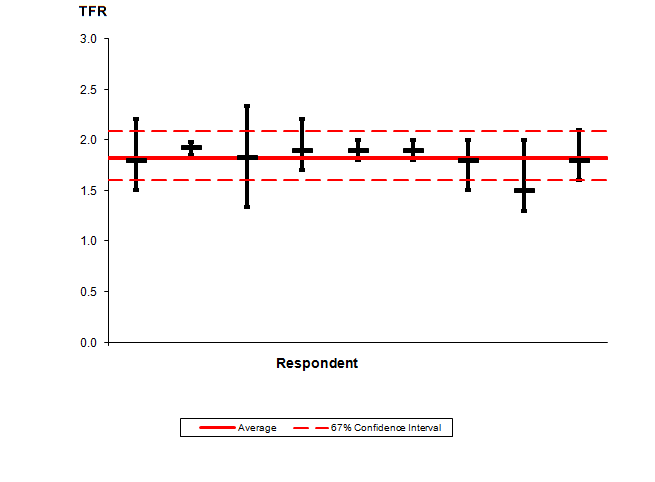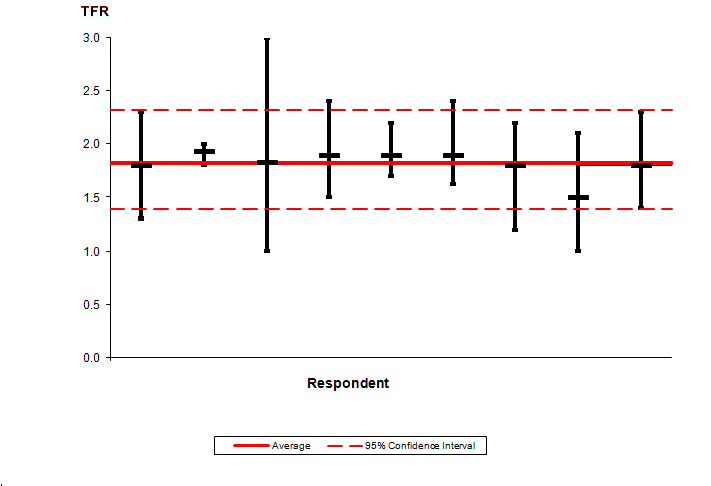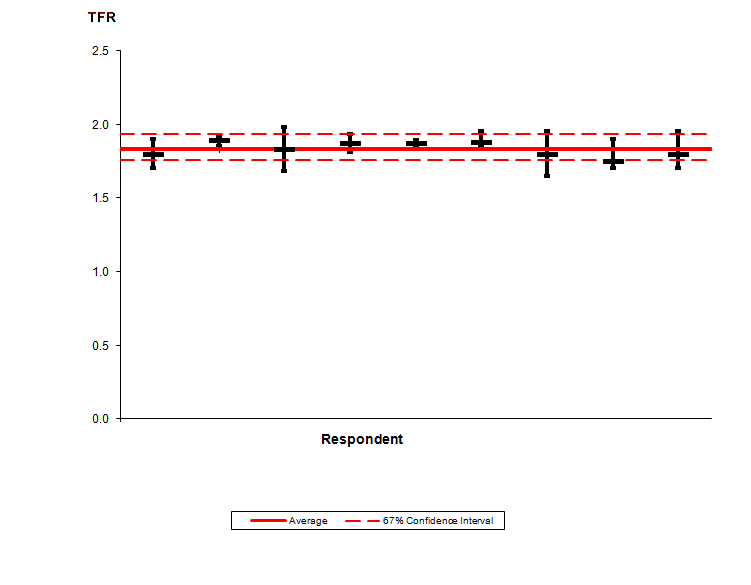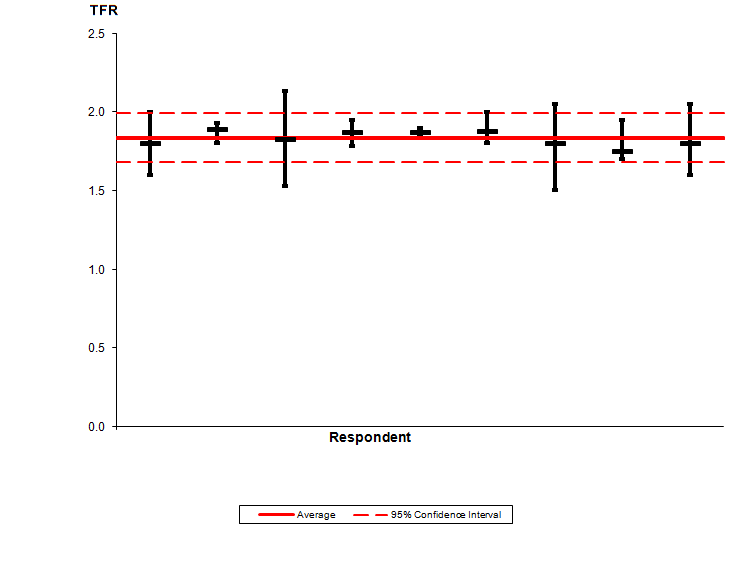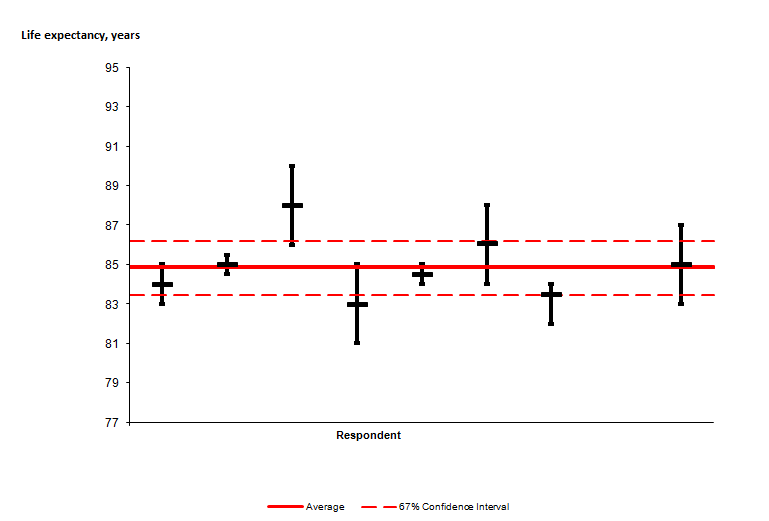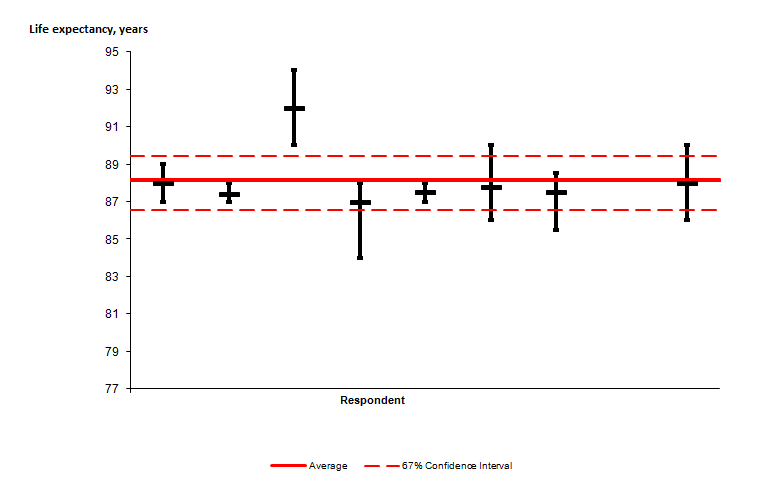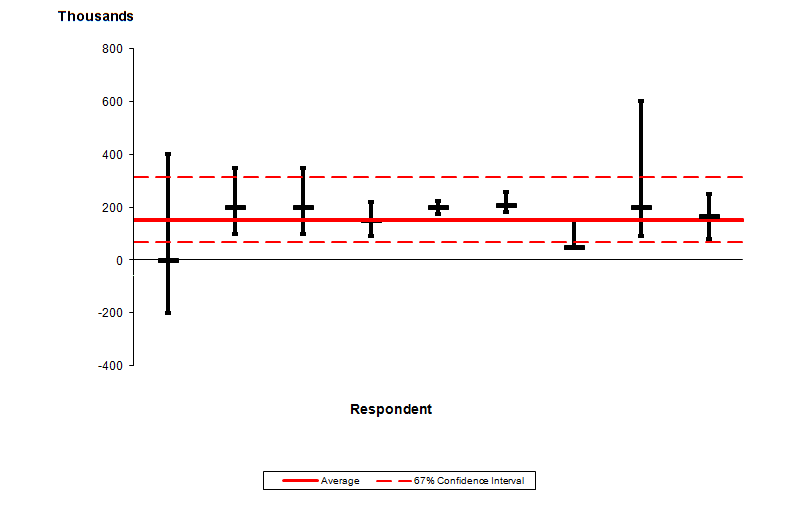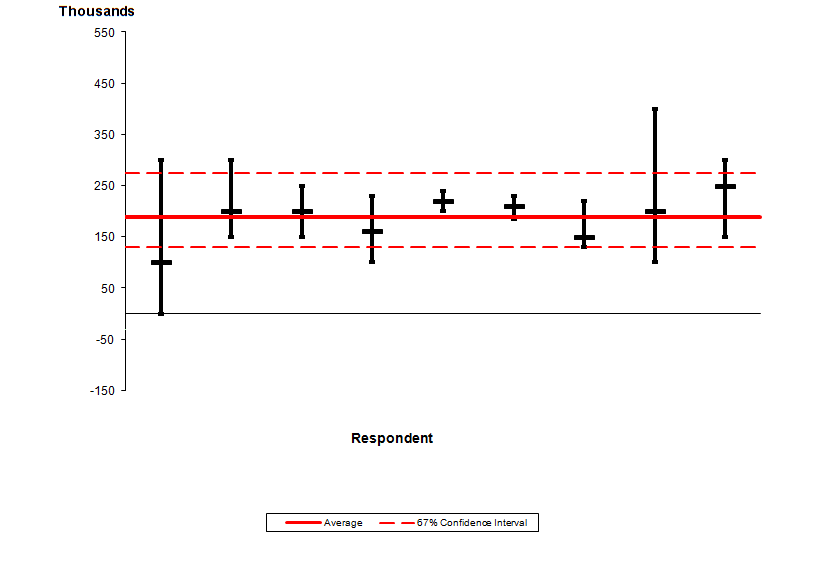Table of contents
- Introduction
- Base population
- Method of projection
- Available projections
- Principal and variant projections
- Summary of long-term assumptions
- Changing state pension age
- National Population Projections expert advisory panel
- Background notes
- Appendix A: Minutes of expert panel
- Appendix B: Analysis of the results of the NPP expert advisory group questionnaire
- Appendix C: Changes to state pension age
1. Introduction
National population projections by age and sex are produced for the UK and constituent countries every 2 years. These sets of projections are based on a review of the underlying assumptions regarding fertility, mortality and migration.
The primary purpose of the projections is to provide an estimate of future population which is used as a common framework for national planning in a number of different fields. The main focus of the 2014-based projections is on the next 25 years up to 2039, though longer-term projections to 2114 are also produced. Population projections become increasingly uncertain the further they are carried forward and particularly so for smaller geographical areas and age-sex breakdowns. In addition to the principal (main) projections, variant projections are also available, based on alternative assumptions of future fertility, mortality and migration. For more information on how our projections meet users’ needs along with information on their fitness for purpose, please see the report on quality and methodology (290.9 Kb Pdf) on our website.
The 2014-based projections replace the 2012-based projections published on 6 November 2013.
The projections were produced by the Office of National Statistics (ONS) on behalf of the National Statistician and the Registrars General of Scotland and Northern Ireland. The underlying assumptions were agreed in liaison with the devolved administrations – Welsh Government, National Records of Scotland (NRS) and Northern Ireland Statistics and Research Agency (NISRA) – following consultation with main users of projections in each country and advice from an expert academic advisory panel.
We have been responsible for the production of the official national population projections for the UK and its constituent countries since 31 January 2006. Prior to this, the responsibility lay with the Government Actuary’s Department (GAD).
This report contains background information for the 2014-based national population projections. Included are sections on:
defining the base population
the method of projections
the availability of projections
background on principal and variants projections
summary of the long-term assumptions of future levels of fertility, mortality and migration
changes to the state pension age
national population projections expert advisory panel
2. Base population
Definition
The projections are based on estimates of the resident population of the UK and its constituent countries at mid-2014. The population includes all usually resident persons, whatever their nationality. Members of HM Armed Forces in the UK are included, but members of HM Armed Forces and their families who are abroad are excluded. Members of foreign armed forces in the UK are included, with any accompanying dependants.
Base populations for individual countries
The projections for England and Wales are based on the mid-2014 population estimates that we published on 25 June 2015. The projections for Scotland are based on the mid-2014 population estimates published by NRS on 30 April 2015 and likewise the projections for Northern Ireland are based on the mid-2014 estimates published by NISRA on 4 June 2015. These estimates are based on the results from the 2011 Census.
In October 2015, National Records of Scotland (NRS) announced small errors in the mid-year population estimates for areas in Scotland. Whilst these errors do not affect the total population of Scotland, or other parts of the UK, they do have a small effect on the age and sex distribution of the population. The impact of these errors is much smaller than the uncertainty around the estimates due to sampling error from the Census. NRS will publish corrected MYEs in April 2016.
The 2014-based NPP are based on the original release of the Scottish MYE in April 2015 and thus do not reflect the correction to the MYE for Scotland used as the base population for the projection. The errors will also have a small effect on the projected age distribution of cross-border migration flows from Scotland to England and Wales. These effects are very small compared to other sources of uncertainty in the projections.
Table 1.1: Base population estimates for 2014-based projections
| Thousands | |
| England | 54,317 |
| Wales | 3,092 |
| Scotland | 5,348 |
| Northern Ireland | 1,840 |
| United Kingdom | 64,597 |
| Source: Office for National Statistics | |
Download this table Table 1.1: Base population estimates for 2014-based projections
.xls (52.7 kB)Estimates of the population aged 90 and over
Official mid-year population estimates produced by ONS, NRS and NISRA are prepared by individual age to the age of 89, with an upper age band for all those aged 90 and over. Estimates of the population aged 90 to 104 by single year of age and for the 105 and over age group are prepared using the Kannisto Thatcher survivor ratio method, with the results controlled to agree with the official estimates of all those aged 90 and over.
Back to table of contents3. Method of projection
The projections are made for successive years running from one mid-year to the next. For each age the starting population, taking into account net migration less the number of deaths, produces the number in the population, one year older, at the end of the year. To this has to be added survivors of those born during the year. Age is defined as completed years at the last birthday.
Migration is assumed to occur evenly throughout the year. For computing purposes, this is equivalent to assuming that half the migrants in a given year at a given age migrate at the beginning of the year and half at the end of the year. The number of net migrants to be added to obtain the population aged x+1 at the end of the projection year therefore consists of half of those migrating during the year at age x and half of those migrating during the year at age x+1.
The number of deaths in a year is obtained by adding half of the net inward migrants at each age to the number in the population at the beginning of the year and applying the mortality rate qx. The mortality rates used in the projections represent the probabilities of death between one mid-year and the next, according to a person's age last birthday at the beginning of the period. The appropriate rate of "infant mortality", that is, the probability of a new-born child not surviving until the following mid-year is also given. This is about 85% of the full, first year of life infant mortality rate used in official statistics.
The number of births in the year is calculated by multiplying the average number of women at each single year of age during the year (taken as the mean of the populations at that age at the beginning and end of the year) by the fertility rate applicable to them during that year. The total number of births in a year is assumed to be divided between the sexes in the ratio of 105 males to 100 females, in line with recent experience. The number of infants aged 0 at the end of the year is calculated by taking the projected number of births, deducting the number of deaths found by applying the infant mortality rate and adding half the number of net migrants aged 0 last birthday.
The principal projections are computed for each of the constituent countries of the UK and the results are added together to produce projections for England and Wales, Great Britain and the UK.
The assumptions have been set using rates based on a consistent series of population estimates which reflects the results of the 2011 Census.
Back to table of contents4. Available projections
For the 2014-based projections, principal projections data have been published up to 100 years ahead for the UK, Great Britain, England and Wales and each of the constituent countries.
Variant projections have been published up to 25 years ahead for the UK and each of the constituent countries. The low migration, high migration and zero net migration (natural change only) variants have also been published for Great Britain.
Data for each country or variant combination have been published in 2 summary tables and 1 zipped open data file.
Summary table 1 contains the total projected population for all years of the projections, the components of change and other summary statistics.
Summary table 2 contains the projected population in 5 year age groups for all years of the projection.
The XML open data files contain:
population by single year of age (0 to 104), age groups (105 to 109, 110 and over) and sex
fertility assumptions by single year of age (15 to 46)
mortality assumptions by single year of age (0 to 125) and sex
cross border rates for each country flow by single year of age (0 to 125) and sex
births by age of mother (15 to 46)
deaths by age (0 to 105 and over) and sex
in, out and net cross border migration by age (0 to 105 and over) and sex
in, out and net international migration by age (0 to 105 and over) and sex
in, out and net total migration by single year of age (0 to 105 and over) and sex
The long-term figures should be treated with great caution. Population projections become increasingly uncertain the further they are carried forward and particularly so for smaller geographic areas and age-sex breakdowns.
Variant projections beyond the published 25 years and for alternative national geographic levels are available on request.
Back to table of contents5. Principal and variant projections
Background
The principal population projections provide a consistent starting point for all government planning which is affected by the numbers in the population. They are based on assumptions considered to be the best that could be made at the time they are adopted. However, due to the inherent uncertainty of demographic behaviour, any set of projections will inevitably be proved wrong, to a greater or lesser extent, as a forecast of future demographic events or population structure. To give users of the projections an indication of this uncertainty and to explore alternative scenarios, a number of variant population projections have also been produced, based on alternative assumptions of future fertility, mortality and migration.
Variants available from the 2014-based projections
In addition to the principal assumptions, high and low variant assumptions have been prepared for each of the 3 components of demographic change: fertility, life expectancy and migration. These variant assumptions are intended as plausible alternatives to the principal assumptions and do not represent upper or lower limits for future demographic behaviour.
Aside from the principal projection, 9 standard variant projections are presented here. These are the 6 possible "single component" variants (that is, varying only 1 component at a time from the principal assumptions); 2 ‘combination’ variants: those produce the largest or smallest total population size, and 1 special case scenario of zero net migration (also known as natural change only). Seven further variant projections will be released on 26 November 2015, see Tables 1.2 and 1.3.
The variants allow users to explore a range of different possible future demographic situations. For example, the high and low migration variants for the UK provide alternative plausible scenarios for long-term net international migration at 80,000 above and below the principal net migration assumption, respectively. The low variant therefore assumes net migration of 105,000 per year, while the high variant assumes net migration of 265,000 per year.
In addition to high and low variants for the fertility, mortality and migration assumptions, other scenarios include "no change", which assumes that fertility and mortality rates will remain constant at current levels and "zero net migration", which allows the effects of the projected trends in fertility and mortality to be examined independently of the effects of migration.
List of available variants
The 2014-based variant population projections are based on the categories of assumptions shown in Table 1.2.
Table 1.2: Assumptions for the 3 components of demographic change
| Fertility | Life expectancy | Net migration | |
| Standard variants | |||
| i | High | High | High |
| ii | Principal | Principal | Principal |
| iii | Low | Low | Low |
| Special case scenarios | |||
| iv | Replacement1 | No improvement1 | Zero |
| v | Constant1 | Long-term balanced (UK only)1 | |
| Source: Office for National Statistics | |||
| Notes: | |||
| 1. Due to be published on 26th November 2015 | |||
Download this table Table 1.2: Assumptions for the 3 components of demographic change
.xls (53.2 kB)From these categories of assumptions, the variant projections released on 29 October 2015 have been created as shown in Table 1.3.
Table 1.3: Variant projections
| Fertility | Life expectancy | Net migration | ||
| A | Principal projection | Principal | Principal | Principal |
| Standard ‘single component’ variants | ||||
| B | High fertility | High | Principal | Principal |
| C | Low fertility | Low | Principal | Principal |
| D | High life expectancy | Principal | High | Principal |
| E | Low life expectancy | Principal | Low | Principal |
| F | High migration | Principal | Principal | High |
| G | Low migration | Principal | Principal | Low |
| Standard ‘combination’ variants | ||||
| H | High population | High | High | High |
| I | Low population | Low | Low | Low |
| K | Young age structure1 | High | Low | High |
| L | Old age structure1 | Low | High | Low |
| Special case scenarios | ||||
| O | Replacement fertility1 | Replacement | Principal | Principal |
| P | Constant fertility1 | Constant | Principal | Principal |
| Q | No mortality improvement1 | Principal | No improvement | Principal |
| J | Zero net migration (natural change only) | Principal | Principal | Zero |
| R | No change1 | Constant | No improvement | Principal |
| U | Long-term balanced net migration (UK only)1 | Principal | Principal | Long-term balanced |
| Source: Office for National Statistics Notes: 1 Due to be released on 26th November 2015 | ||||
Download this table Table 1.3: Variant projections
.xls (27.1 kB)The 2014-based projections for the UK projection have been calculated as the sum of the projections for the 4 individual countries (England, Wales, Scotland and Northern Ireland). Therefore, the projected population numbers, deaths at each age, and births at each age of mother for the UK are just the sum of those for the 4 individual countries. The "assumed" UK fertility and mortality rates are then "back-calculated" from these projected births, deaths and population numbers.
Previously some of the UK variant projections were "non-additive", that is, they were not calculated as the sum of those for the 4 individual countries. This change has been introduced partly as a result of the introduction of a new cross-border migration methodology and partly to meet a user requirement for variant projections for Great Britain.
Back to table of contents6. Summary of long-term assumptions
The new principal projections are based on the long-term assumptions of future fertility, mortality and net migration (that is, immigrants minus emigrants) and are summarised in Table 1.4. These have been agreed in consultation with NISRA, NRS and the Welsh Government. Comparisons are given with the assumptions made for the previous 2012-based projections.
Table 1.4: Long-term assumptions for the 2014-based national population projections compared with assumptions for the 2012-based projections
| UK | |||||
| United Kingdom | England | Wales | Scotland | Northern Ireland | |
| Fertility – Long-term average number of children per woman | |||||
| 2014-based | 1.89 | 1.90 | 1.90 | 1.70 | 2.00 |
| 2012-based | 1.89 | 1.90 | 1.90 | 1.75 | 2.00 |
| Mortality - Expectation of life at birth in 2039* | |||||
| Males 2014-based | 84.1 | 84.3 | 83.4 | 82.3 | 83.3 |
| Males 2012-based | 84.3 | 84.5 | 83.8 | 82.2 | 83.5 |
| Females 2014-based | 86.9 | 87.1 | 86.4 | 85.0 | 86.5 |
| Females 2012-based | 87.5 | 87.8 | 87.1 | 85.7 | 87.0 |
| Net international migration † – Annual long-term assumption | |||||
| 2014-based | +185,000 | +170,500 | +4,000 | +9,500 | +1000 |
| 2012-based | +165,000 | +150,000 | +3,000 | +12,000 | 0 |
| Source: Office for National Statistics | |||||
| Notes: | |||||
| 1. * Expectations of life for 25 years ahead given as specimen year. Note these are period expectations of life based on the mid-year mortality rates assumed for the year 2039 and do not take account of the continuing improvement in mortality projected beyond 2039. | |||||
| 2. † Net international migration does not include cross-border migration between the countries of the UK. | |||||
Download this table Table 1.4: Long-term assumptions for the 2014-based national population projections compared with assumptions for the 2012-based projections
.xls (25.1 kB)For the UK, the long-term assumption of average completed family size is 1.89 children per woman, the same as in the 2012-based projections. More information can be found in the fertility assumptions section of the release.
Assumptions on improvements in mortality are unchanged from the 2012-based projections. More information can be found in the mortality assumptions section of the release.
The new long-term assumption for net migration to the UK is +185,000 each year compared with +165,000 a year in the 2012-based projections. More information can be found in the migration assumptions section of the release.
Back to table of contents7. Changing state pension age
Pensionable ages for men and women
Full details about the current and planned changes to state pension ages under the Pensions Acts of 1995, 2007, 2011 and 2014 can be found in Appendix C.
Between 2010 and 2020, state pension age will change from 65 years for men and 60 years for women, to 66 years for both sexes:
any woman born before 6 April 1950 will attain pensionable age when she reaches the age of 60
for women born between 6 April 1950 and 5 December 1953, the date that pensionable age will be attained can be found in changing the pension age table 1.5
for men and women born between 6 December 1953 and 5 October 1954, the date that pensionable age will be attained can be found in changing the pension age table 1.6
State Pension Age will then increase to 67 years for both men and women between 2026 and 2028:
any person born after 5 October 1954 but before 6 April 1960 will attain pensionable age when he or she reaches the age of 66
for persons born between 6 April 1960 and 5 March 1961 will reach their State Pension age at 66 years and the specified number of months that is shown in changing the pension age table 1.7
any person born after 5 March 1961 but before 6 April 1977 will attain pension age when he or she reaches the age of 67
for persons born between 6 April 1977 and 5 April 1978, the date that pensionable age will be attained can be found in changing the pension age table 1.8
any person born after 5 April 1978 will attain pensionable age when he or she attains the age of 68
Sources: Pensions Act 1995 Chapter 26 Part II Section 126 and Schedule 4; Pensions Act 2007 Chapter 22 Part I Section 13 and Schedule 3; Pensions Act 2011 Part 1 Section 1 and Schedule 1; Pensions Act 2014 Part 3 Section 26 and Section 27.
The data presented in this bulletin do not reflect proposed further changes to the state pension age published by the government. They propose bringing forward the increase to state pension age to 68 by the mid-2030s and 69 by the late 2040s. These proposed changes are not yet law and still require the approval of Parliament. Further information relating to these proposals can be found on the GOV.UK website.
Calculation of populations of working age and pensionable age for national population projections
Populations of working age and the pensionable age for national population projections are calculated in the following ways:
from 2014 to 2020, the number of women aged 60 to 65 who are of pensionable age is calculated using changing the pension age table 1.9
from 2014 to 2018, all men aged 60 to 64 are of working age and all men aged 65 to 70 are of pensionable age. From 2019 to 2020, the number of men aged 65 who are of pensionable age is calculated using changing the pension age table 1.10
similarly, from 2021 to 2025, all persons aged 66 and over are of pensionable age. From 2028 to 2043, all persons aged 66 are of working age and all persons aged 67 and over are of pensionable age. From 2026 to 2027, the number of men and women aged 66 who are of pensionable age is calculated using changing the pension age table 1.11
from 2046 onwards, all persons aged 68 and over are of pensionable age and all persons aged 67 are of working age. From 2044 to 2045, the number of men and women aged 67 who are of pensionable age is calculated using changing the pension age table 1.12
8. National Population Projections expert advisory panel
An expert academic panel advises ONS early on in the assumptions-setting process on current and emerging demographic trends and their possible implications for the national population projections. This panel met in 2015 to advise on the assumptions for 2014-based population projections.
The membership of the panel for the 2014-based national population projections was as follows:
Professor Ann Berrington, University of Southampton
Ben Corr, Greater London Authority
Professor Peter Goldblatt, University College, London
Professor Carol Jagger, Newcastle University
Doctor Nik Lomax, University of Leeds
Professor Mike Murphy, London School of Economics
Professor John Salt, University College London
Professor Ludi Simpson, University of Manchester
Doctor Chris Wilson, University of Oxford
Panel meeting
A note of the panel meeting held on 9 April 2015 is available in Appendix A.
Questionnaire
The panel completed a questionnaire where they were asked what they thought were the most likely future levels of fertility, life expectancy and migration. They were also asked for their views on the validity and importance of a wide range of arguments which might be thought likely to influence future trends. The questionnaire was originally devised by the International Institute for Applied Systems Analysis (IIASA) in Vienna and has been adapted by us for use in the UK. It is reviewed for each projection round to ensure that the experts’ views on current and emerging trends are collected.
Details of the panel’s views on the most likely levels of the total fertility rate, life expectancy at birth and total net migration to the UK (and associated 67% and 95% confidence intervals) in the years 2018 and 2038 can be found in Appendix B.
Back to table of contents

